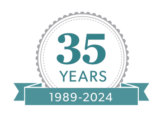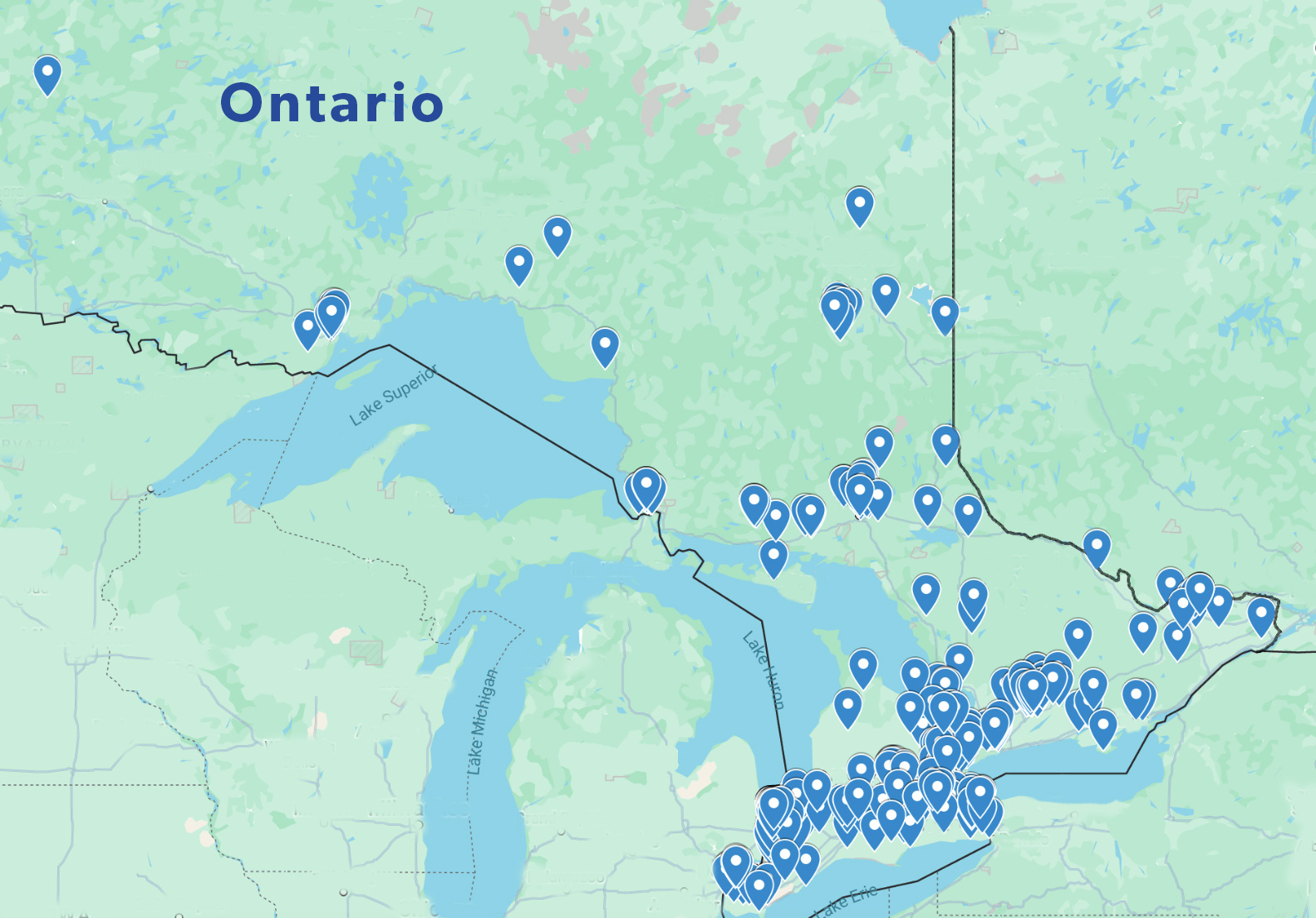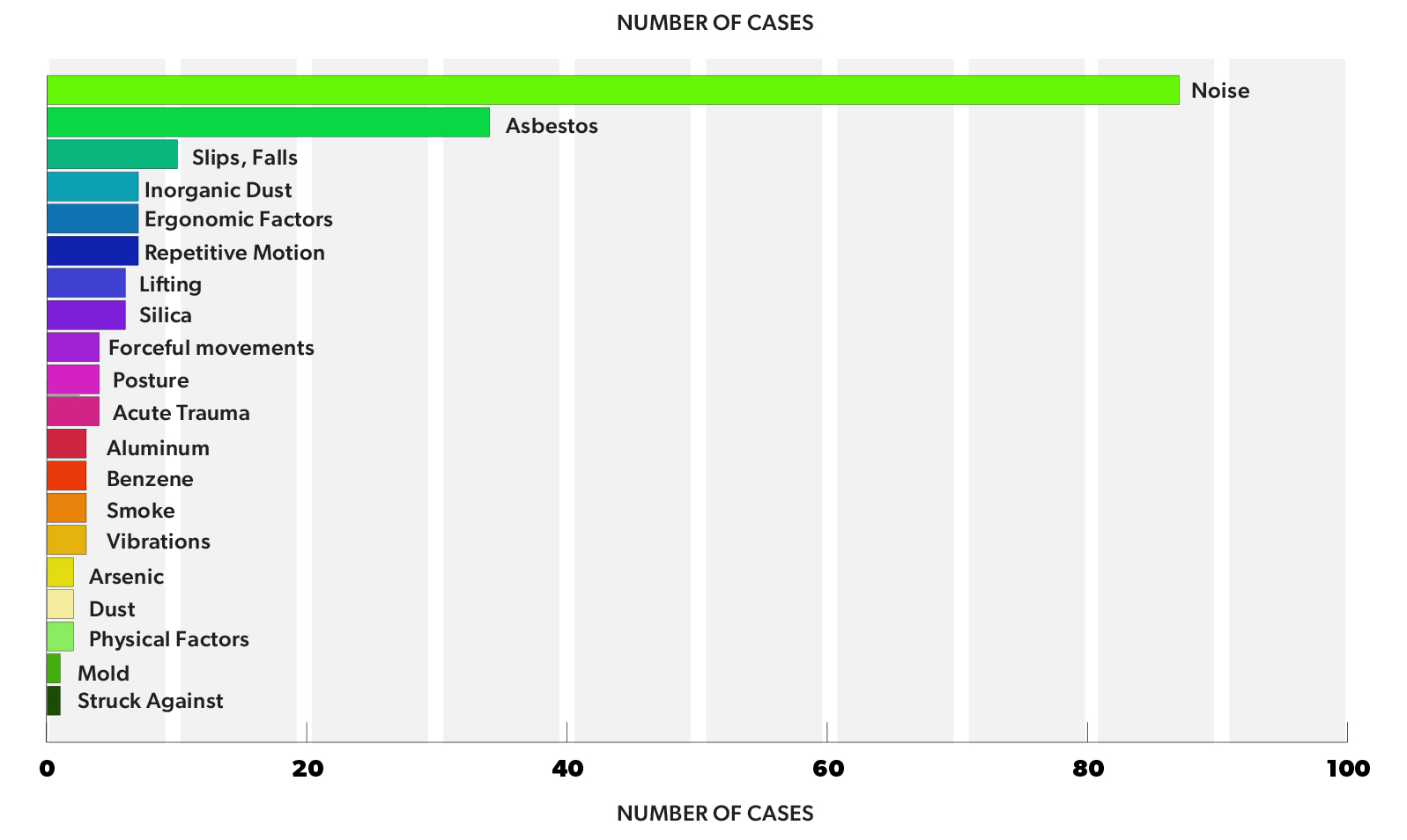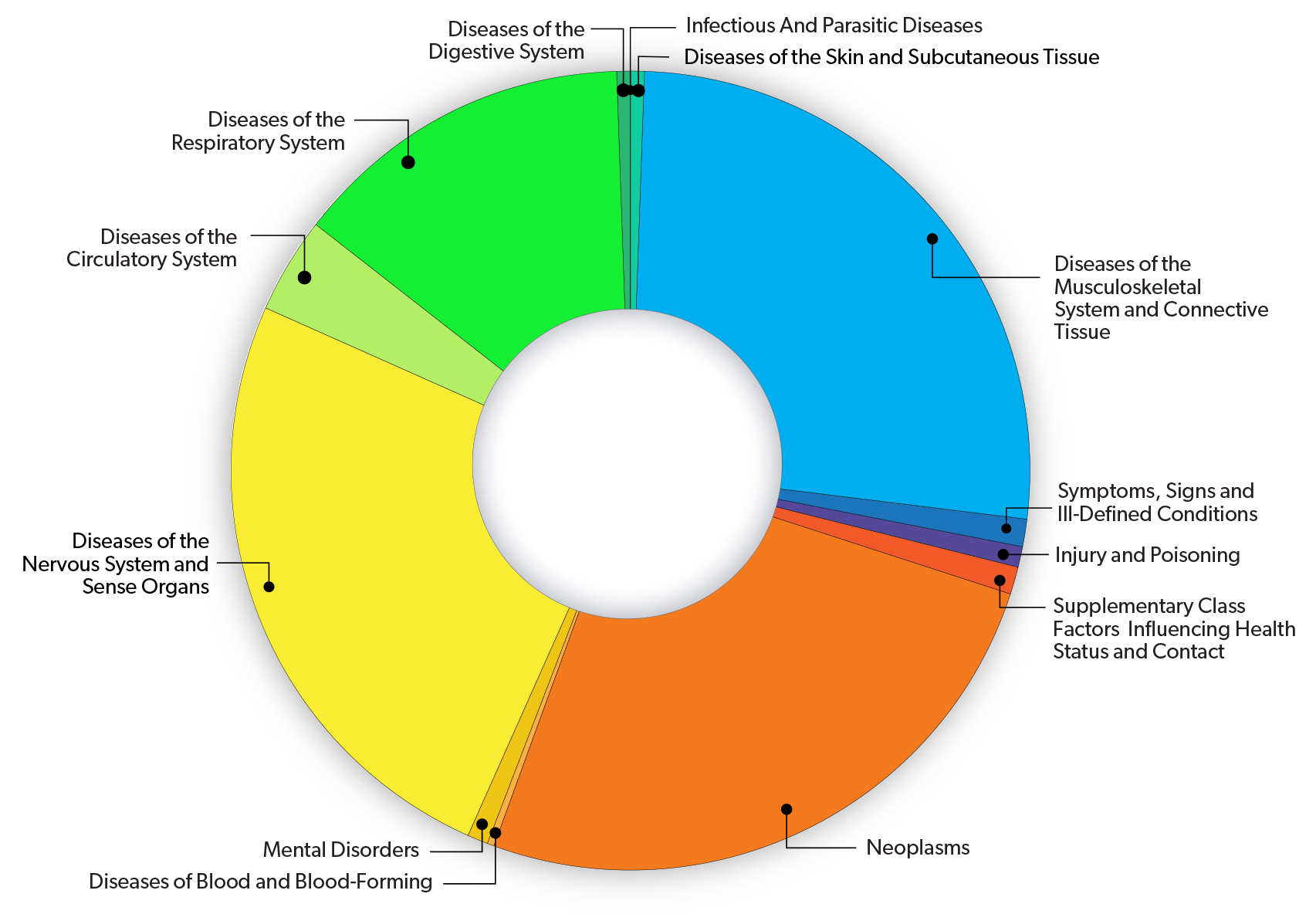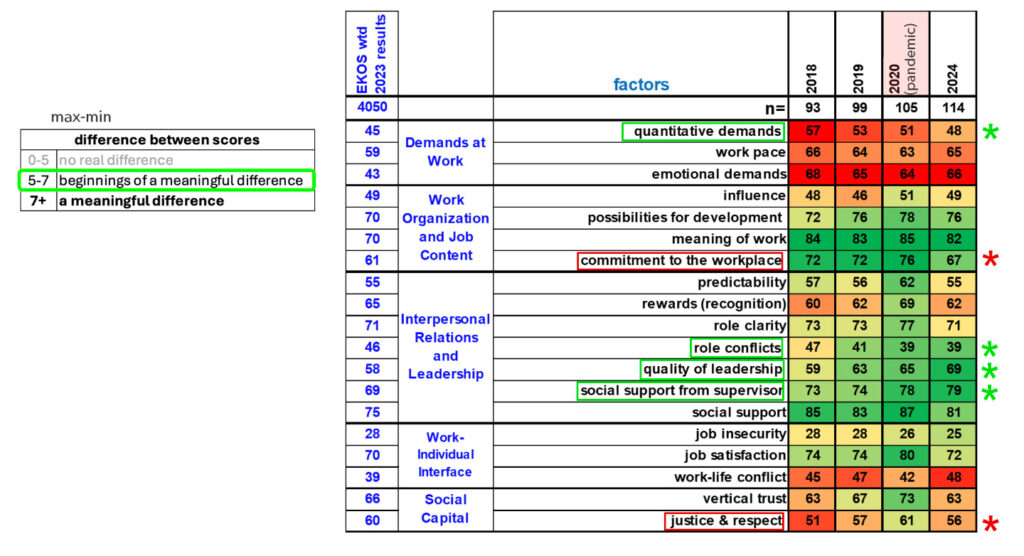- INTRODUCTION
- CASE STUDIES
- KEY PRIORITIES
- TOOLS AND RESOURCES
- FINANCIALS

Occupational Health Clinics for Ontario Workers Inc.
Annual Report 2024/25
VISION
-
- the detection, prevention and elimination of occupational disease, injuries and illnesses; and
- the promotion of the highest degree of physical, mental and social well-being for all workers.
MISSION
- protect workers and their communities from occupational disease, injuries and illnesses;
- support their capacity to address occupational hazards;
- promote the social, mental and physical well-being of workers and their families;
We strive to accomplish this through:
- Identification of workplace factors which are detrimental to the health and well-being of workers;
- Empowering workplace parties to make positive occupational health changes in their workplace;
- Providing information, knowledge and organizational skills to the workplace parties to eliminate work practices that cause injury, illness and disability.
OHCOW By the Numbers
Number of
consulting hours
2,250
Number of unique
firms consulted
377
Number of new
materials developed
276
Number of OHS materials
distributed
217,664
Number of educational events on prevention
109
Number of individuals
attending educational events
10,774
Number of patient
cases worked on
1,755
Number of new
patient cases opened (See Map)
471

Testimonials
Thank you to OHCOW, and especially to Dr. B and J, for all the work on my husband's file. J, I am so grateful for your dedication, your willingness to listen, and for helping my family navigate this process. You have been truly amazing and a source of hope.
In my role as a worker representative, I have relied on OHCOW medical, ergonomist, and hygiene reports in appeals at the Board or Tribunal, for many years... [they] are helpful for the advocate in understanding complexities that arise in cases. Keep up the great work!
It was a great help to get a successful result to my claim, and a great surprise. Thank you for your help.
24/25 OHCOW's Total Patient Cases Opened
Introduction
 Direction and Perspectives
Direction and Perspectives
On behalf of David Chezzi (President and Chair of the Board) and Michael Roche (CEO) we welcome you to the 2024-2025 Occupational Health Clinics for Ontario Workers Inc. Annual Report.
The fiscal period 2024-2025 is the third year of our 4-year Strategic Horizon Plan. The plan gives strategic directions, priorities with different lens perspectives, and a Balanced Scorecard measuring framework for organizational assessment.
Some highlights include:
- Leveraging of technology by using cloud-based solutions in conjunction with records being digitized.
- A continuation of efficiently centralizing patient cases with a focus on backlog. This resulted in us working on more cases this year than planned with a further goal to be able to bring in a greater number of new cases going forward.
- We have transitioned to working on a global model with cross functional teams including a central intake process. By working efficiently we make best efforts to service the workers of the province as effectively as possible relative to our available resources.
Related to our operational work, it includes three main program areas — Occupational Illness, Workplace Mental Health, and Injury Prevention. All three have produced exciting offerings included in this report.
Our Board and Local Outreach Committees (LOC) provide the strategic direction to our organization as well as an outreach component to assist us in getting information into the hands of workers and we also want to acknowledge our Staff and contracted Physicians who do an outstanding job.
We thank you for your interest in our 2024-2025 Annual Report and encourage you to explore the rest of the report and learn more about the many wonderful accomplishments of our organization.

David Chezzi
President and Chair of the Board

Michael Roche
Chief Executive Officer
David Chezzi
President and Chair of the Board
Canadian Union of Public Employees (CUPE)
John Bartolomeo
Vice-President and Vice-Chair of the Board
Worker's Health and Safety Legal Clinic
Scott Richardson
Treasurer
L.O.C. Chair – Windsor,
Injured Worker Advocate, UNIFOR Local 444
Catherine Petch
Secretary
Canadian Union of Postal Workers (CUPW)
Crystal Stewart
Ontario Federation of Labour
Sylvia Boyce
U.S.W., District 6, H & S, Environment, WSIB
Joscelyn A. Ross
Health and Safety Officer, Worker Safety Unit
Matt Stalker
Hamilton Brantford Building Trades (HBBT)
Rachel Muir
Ontario Nurses' Association (ONA)
Debora De Angelis
U.F.C.W. National Rep
Gavin Jacklyn
Ontario Professional Firefighters Association
Janet Paterson
Thunder Bay District Injured Workers Support Group
Rona Eckert
Canadian Union of Postal Workers (CUPW)
Katrina Wheaton
OECTA
Joanne Hay
UNIFOR
Leigh Kittson
L.O.C. Chair – South Central Region
Teamsters Rail Conference
Laura Lozanski
L.O.C. Chair – Eastern Region
Canadian Office and Professional Employees Union (COPE) Local 225
Andréane Chénier
L.O.C. Chair – Northern Region
Canadian Union of Public Employees (CUPE)
NON VOTING
Michael Roche
Chief Executive Officer
Occupational Health Clinics for Ontario Workers (OHCOW)
ADVISOR
Diane Parker
L.O.C. Chair – Northwestern Region
Catherine Petch
CUPW
Toronto LOC Chair
Leigh Kittson,
Teamsters Canada Rail Conference (TCRC)
Hamilton LOC Chair
Laura Lozanski,
Ottawa LOC Chair,
Canadian Office and Professional Employees Union
(COPE) Local 225
Andréane Chénier,
CUPE
Sudbury LOC Chair
Scott Richardson,
UNIFOR
Windsor LOC Chair

 35 Years of Service to Ontario Workers
35 Years of Service to Ontario Workers
In 2024, the Occupational Health Clinics for Ontario Workers Inc. (OHCOW) celebrated our 35th anniversary. OHCOW was formed as a non-governmental organization in 1989 to provide an entity that could fairly assess workplace injury claims and respond to workers’ concerns about safety protocols at their jobs, without the bias of employers or an insurance agency. It was heralded as an important first step for better occupational health and safety services. for more information about OHCOW's early years, see our commemorative post about the occasion.
Our Goals
The Occupational Health Clinics for Ontario Workers Inc. (OHCOW) is a unique organization dedicated to protecting workers and their communities from occupational illness, disease, and injury; to support their capacity to address occupational hazards; and to promote the social, mental, and physical well-being of workers in Ontario.
We strive to accomplish this through the identification of workplace factors which are detrimental to the health and well-being of workers; by empowering workplace parties to make positive occupational health changes in their workplace and by providing information, knowledge, and organizational skills to the workplace parties to eliminate work practices that cause injury, illness, and disability.
We are a small organization of experienced and dedicated staff striving to make a significant impact in these key areas by learning from workers (and workplaces), leveraging research, translating knowledge, developing tools, and especially, cultivating partnerships and networks to broaden reach and impact. Together, we are making a difference.
Internal Process Updates
Case Studies
It is critical to be able to identify workplace exposures, past or present, and how they affect the health of workers. Recognizing causal relationships allows for the ability to support claims when warranted, but more importantly, to advise workers, workplaces and even industries on how to prevent such exposures in the future. The following case studies from 2024/25 illustrate how OHCOW multidisciplinary approach is used to help workers:
In this case, proximity of each individual worker to the hazardous activity was a factor in the outcome.
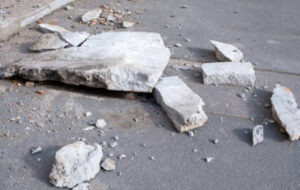 Background
Background
OHCOW was contacted by a union representative to evaluate the risk of asbestos exposure to construction workers during the partial demolition of an asbestos-containing wall. The representative wanted a professional assessment of the potential for asbestos exposure in construction, as well as expert opinion on whether the union members were put at risk for exposure during the demolition activity.
Intervention
Two OHCOW Occupational Hygienists carried out information gathering with the union representative through phone calls and email exchanges. They interviewed union members and reviewed the building’s Designated Substances and Hazardous Building Materials Survey.
The construction activities had been carried out by a third-party construction company without the use of asbestos abatement protocols. While the union members did not participate directly in the partial wall demolition, they worked nearby the work activities. Information on the partial wall demolition was collected, including how the work was completed. This included the use of a concrete saw, the duration of the work and the extent of the demolition (e.g. a space large enough to allow forklift access).
It was determined that there was the potential for union members to have been overexposed to asbestos fibres at peak times. The extent of exposure would have been conditional on the distance from the source concentration (e.g. the partial wall demolition).
OHCOW Impact
OHCOW provided an estimated range of potential asbestos exposures for union members based on distance of the source (e.g. from 1-5 feet, >5-10 feet, etc.). It was also recommended that a WSIB Worker’s Exposure Incident Form be completed and submitted for each union member who may have been working nearby the partial wall demolition.
A full report of the health dangers of excavations in wet soil conditions was produced.
Background
 Excavation is a process that can produce unforeseen hazardous exposures to workers. Multiple clients have approached OHCOW to evaluate the risks posed during excavations. After two in-depth reviews, a generic report was prepared to help identify the risks of this activity. The two most significant risks are:
Excavation is a process that can produce unforeseen hazardous exposures to workers. Multiple clients have approached OHCOW to evaluate the risks posed during excavations. After two in-depth reviews, a generic report was prepared to help identify the risks of this activity. The two most significant risks are:
- fungal infections,
- chemical exposures if the soil / site being excavated is contaminated.
Intervention
OHCOW produced a report summarizing the main occupational risks of the fungal infections blastomycosis (affecting heart, skin, bones and other organs) and histoplasmosis (affecting lungs) posed by the activity of excavation.
Blastomycosis is an infection with a fungus called Blastomyces. This fungus normally grows in very wet soils and in wet rotten wood. In Ontario, Blastomyces is naturally occurring around lakes and rivers. It’s estimated that about half of blastomycosis infections are asymptomatic, making it a challenge to estimate the amount of infected. For those who do have symptoms, it often mimics a fever, with cough, body ache, and muscles ache. Severe respiratory dress including pneumonia can also occur. Workers in or near wet soil near waterways are at risk, including construction workers, excavation workers, forestry workers, environmental surveyors, and landscapers.
Histoplasmosis is an infection with the fungus Histoplasma capsulatum, which can grown anywhere in Ontario. The highest case rates are in Toronto and along the St. Lawrence River Seaway. Most of these infections are minor or asymptomatic (as many as 75%). For those who do have symptoms, it is usually mild or may be “flu-like”. In a small number of infections, individuals will get severe respiratory stress. Workers who are at risk of Histoplasmosis are those who work with or in soil such as excavation workers and forestry workers, as well as those who work with or near bird or bat droppings, such as demolition workers and farmers.
Chemical contaminants in the soil are present if past industrial or other exposures occurred. The hazards in the soil will vary depending on both its natural contents and the site’s former uses. Soil can naturally contain harmful levels of arsenic and lead, and past industrial or farming uses can result in soil containing asbestos, corrosive agents, insecticides or pesticides, lead, metals / metalloids, petroleum-based chemicals, and volatile organic compounds (VOCs). Prior to undertaking any excavation, surveying is recommended to assess risks.
OHCOW Impact
OHCOW prepared a report on the common risks that can occur from soil disturbances such as excavations. That said, the information on Blastomycosis, Histoplasmosis, and Chemical Contaminants can be applied to any occupation where the soil may be disturbed. The report is available for free download.
Testing for a specific chemical can require specific equipment and expertise not always available.
 OHCOW's work with Pipefitters is ongoing. Lead exposure from pipework is the major concern. Workers continue to be exposed to dust on their hands and clothes, as well as contaminated surfaces, during (and after) pipefitting tasks. Leaded pipe sealant is still being used by pipefitters as well as other labourers across Ontario.
OHCOW's work with Pipefitters is ongoing. Lead exposure from pipework is the major concern. Workers continue to be exposed to dust on their hands and clothes, as well as contaminated surfaces, during (and after) pipefitting tasks. Leaded pipe sealant is still being used by pipefitters as well as other labourers across Ontario.
What did we accomplish this year?
- Preparations are well underway to test 40 workers with an Xray technology able to detect lead in bone, the L-XRF. This is significant as Canada currently has no XRF testing. Funding and qualified researchers to conduct the tests are being procured.
- A booklet has been published outlining lead exposure for specific workplaces and distributed to the workforce at the union Local level this year. Further distributions for this booklet are planned.
- Presentations have been conducted to Union members at an OHCOW Medical Rounds to let all staff understand the broad scope of this issue.
- A virtual conference for the American Association of Occupational Health Nurses (AAOHN) was conducted, given that the many US companies operate in Ontario.
- A publication is being considered by the AAOHN journal on the lead exposure in pipefitters
- An abstract for a poster consideration by the Association of Occupational Health Professions in Healthcare (AOHP) has been started.
What’s coming next?
- Broadening the lead booklet distribution
- Presentations will include a webinar that the Ministry of Labour, Immigration, Training and Skills Development (MLITSD) can attend. This will be initiated by the union.
- Updating OHCOW’s old lead brochure.
- Continuing to work with a researcher for XRF testing for more workers.
- Finalizing a health questionnaire for health care professionals to use in taking a lead history.
- Consulting with lead exposure patients whose claims have been denied.
Sometimes factors need to be considered additively rather than individually — in this case exposure to the mineral cadmium combined with night shift work.
Background
 This summary concerns a worker who was diagnosed with prostate cancer and claimed entitlement to benefits through WSIB. The worker attributed his cancer to occupational exposure at General Electric's Peterborough facility, where he worked from 1961 to 1998 as a tool and die maker. His duties involved fabricating metal dies, molds, machine tools, cutting tools, gauges, and other items used in the manufacturing processes. Approximately 10% of his time was spent brazing, a process for joining metal pieces by soldering.
This summary concerns a worker who was diagnosed with prostate cancer and claimed entitlement to benefits through WSIB. The worker attributed his cancer to occupational exposure at General Electric's Peterborough facility, where he worked from 1961 to 1998 as a tool and die maker. His duties involved fabricating metal dies, molds, machine tools, cutting tools, gauges, and other items used in the manufacturing processes. Approximately 10% of his time was spent brazing, a process for joining metal pieces by soldering.
His claim was denied on the basis there was not enough evidence to show a causal relationship between workplace exposure and the worker’s cancer. Prostate cancer is not a scheduled disease or considered an occupational disease by WSIB. As such, the claim was adjudicated on an individual circumstance basis.
Intervention
OHCOW hygienists sought to support this claim by
- characterizing his occupational exposures to arsenic, cadmium and working night shifts;
- adjusting the era of employment with the era of the exposure data; and
- highlighting a possible additive effect between multiple carcinogens for the same target organ.
The hygienists interviewed the worker and reviewed information from the claim file, such as the worker’s employment history, past workplace inspection reports and all employer-produced occupational hygiene documents. Relevant scientific technical reports centering on cadmium was reviewed. From all this data, an occupational hygiene report was created containing concise hygiene information and opinion for an appeal submission to the WSIB.
The OHCOW review re-examined the agents associated with prostate cancer, referring to the most current list of carcinogens from the International Agency for Research on Cancer (IARC). The review noted that the worker's night shift work and rotating shifts had not been considered by the WSIB in the initial assessment.
OHCOW hygienists identified technical documents from the time period that the worker was at GE. NIOSH Health Hazard Evaluations (HHE) are technical documents which contain detailed analyses of workplace health hazards, including data collection, exposure assessments, and advice on how to improve workplace conditions. The hygienists searched the HHE database using the key word “cadmium” and limited the search to the era of interest. Technical documents were reviewed to determine applicability and relevance to the worker’s job descriptions. The evidence suggested that the worker could have been exposed to higher levels of cadmium then determined by the WSIB during his initial work period, specifically in the 60s and 70s. An additional finding from this review was that all employees in an area of brazing could be indirectly exposed to noteworthy levels of cadmium, from the associated solder.
A review prepared by Dr. Paul Demers for the Ontario Ministry of Labour, Immigration, Training and Skills Development in 2020 concluded that carcinogens for the same target organ are presumed additive unless there is evidence to the contrary. OHCOW suggested that it was reasonable to conclude the worker was exposed to several agents (i.e., night shift and cadmium) that are positively associated with prostate cancer, and that these exposures may have been at least additive.
OHCOW Impact
OHCOW was able to introduce a new agent associated with prostate cancer in the form of night shift work. OHCOW identified that the worker’s exposure to cadmium should be adjusted upwards since the era of employment was inconsistent with the era of the exposure data. Further, the worker’s overall cancer risk calculation was strengthened by suggesting that cadmium and night shift should be considered additively rather than viewed as individual exposures.
OHCOW helped a social services office analyze the results of four annual online surveys
Background
OHCOW developed and supports the StressAssess Workplace Survey which is based on the internationally recognized and validated Copenhagen Psychosocial Questionnaire (COPSOQ). It can be used independently via the website, or individually customized by OHCOW Workplace Mental Health (WMH) staff. In the summer of 2024, a unique opportunity arose. A medium sized social services office used an online web-app to self-administer 4 surveys for the years 2018, 2019, 2020 and 2024 and then approached OHCOW for further analysis and comparison over time.
Intervention:
- OHCOW Workplace MentalHealth (WMH) staff aggregated the data from all 4 surveys and looked for definable trends, particularly improvements. For the most recent survey, we also evaluated the changes in average scores for the COPSOQ scales.
- The 2020 survey was done in November while staff were working remotely. For the most recent survey (2024) staff are working at the office workstations again.
- Over the six years, significant improvements were seen for quantitative demands, role conflicts, quality of leadership, social support from supervisor, and bullying.
- The 2020 pandemic lockdown survey results showed improvements in job satisfaction, justice & respect, vertical trust, role conflicts, recognition, commitment to the workplace, and possibilities for development.
- Interestingly, the improvements experienced during the pandemic lockdown disappeared in the 2024 survey (except for role conflicts).
- The trend for bullying mirrored the trend in our Canadian reference population surveys (2016, 2019 & 2023) and thus may not have been due changes at the local level but rather due to changes in attitudes to behaviours considered bullying.
Conclusion
StressAssess in its free and accessible format is an ideal tool to assist organizations in their workplace mental health and injury prevention efforts, especially with the additional support (where needed) by our experienced WMH staff. For this workplace, the StressAssess/COPSOQ survey was able to capture the positive changes during the pandemic lockdown, while also demonstrating that these gains were mostly lost by the time of the 2024 survey. Hopefully these positive and negative changes will allow the workplace parties to identify and pursue lasting improvements over time. We look forward to working with them further in their continued use of StressAssess to monitor the results of their efforts.
Chart: Comparison between surveys (2018-2024)
Literature about IPF has been updated and can affect previously denied claims that are now being appealed.
Background
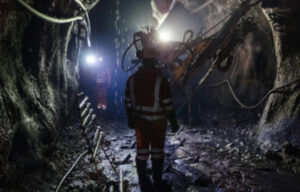 OHCOW was contacted by a union representative to evaluate the risk of idiopathic pulmonary fibrosis (IPF) in a miner. This individual was diagnosed at the age of 59, several years after retiring from mining. The initial WSIB claim was denied. OHCOW prepared a report reviewing the miner’s exposures, which the advocate submitted to the Workplace Safety and Insurance Board (WSIB) Appeals Resolution Officer. The appeal was denied. As this process took years, OHCOW was approached again to prepare an updated report reviewing the risks of occupational IPF. The advocate submitted the new report to the Workplace Safety and Insurance Appeals Tribunal (WSIAT).
OHCOW was contacted by a union representative to evaluate the risk of idiopathic pulmonary fibrosis (IPF) in a miner. This individual was diagnosed at the age of 59, several years after retiring from mining. The initial WSIB claim was denied. OHCOW prepared a report reviewing the miner’s exposures, which the advocate submitted to the Workplace Safety and Insurance Board (WSIB) Appeals Resolution Officer. The appeal was denied. As this process took years, OHCOW was approached again to prepare an updated report reviewing the risks of occupational IPF. The advocate submitted the new report to the Workplace Safety and Insurance Appeals Tribunal (WSIAT).
The advocate asked if IPF could be related to occupational exposures. By definition, IPF is idiopathic, arising spontaneously, with no known risks factors or causal agents. However, a review of the peer vetted literature found there are occupational agents that increase the risk of developing IPF by a statistically significant margin.
Intervention
Two OHCOW Occupational Hygienists reviewed the updated literature. Four large reviews concluded that there are occupational risk factors associated with an increased risk of IPF. In addition, the American Thoracic Society and the European Respiratory Society produced a joint statement concluding that 26% of IPF diagnoses are caused by occupational exposures to vapours, gases, dusts, and fumes (VGDF).
The OHCOW Occupational Hygienists conducted interviews with the miner to verify the employer-provided job history and to determine what specific tasks he performed. The miner identified ventilation issues and lack of personal protective equipment (PPE), including respiratory protection equipment (RPE), over the time he worked there. The Hygienists then reviewed the exposure monitoring data provided by the miner’s employer, and exposure monitoring data in the Ontario Mining Exposure Database (OMED), to estimate the miner’s historical exposures based on the exact mines he worked in, or in similar mines. The process of estimating a workers’ past exposures is described as a retrospective exposure assessment.
The Hygienists turned to the peer-reviewed occupational epidemiology literature. Estimated risks of IPF were identified based on occupational epidemiological data that compared the exposure range the miner would have had to the increased risk of IPF. Based on the literature, they concluded it was probable that the miner’s historical exposures to asbestos, diesel exhaust (DE) (measured as elemental carbon (EC)), mixed metal dusts, nickel, respirable particulate, and silica, increased the miner’s risk of developing IPF.
A report was prepared estimating the miner’s past exposures and summarizing the increased risks of IPF from these exposures, as published in the peer-reviewed literature. The advocate provided this report to WSIAT.
OHCOW Impact
WSIAT reviewed the materials provided by the advocate and by the employer.WSIAT allowed the appeal.
OHCOW had the opportunity to observe the impact on workplace mental health when remote workers are brought back to the office.
Background
OHCOW developed and supports the StressAssess Workplace Survey which is based on the Copenhagen Psychosocial Questionnaire (COPSOQ), and can be used independently via the website, or individually customized by OHCOW Workplace Mental Health (WMH) staff. In the summer of 2024, a unique opportunity arose to see real-time validated effects of a major change in workplace policy — forcing workers back to the office after working from home, which continues to be a highly contentious issue in Canada.
Intervention
During a large union sponsored survey (almost 3000 members) the employer made an announcement that workers would be required to come to the workplace to do their work after having worked remotely for 4½ years. This particular announcement allowed OHCOW WMH staff to capture the impact of this issue, by comparing the scale scores before and after the announcement.
Prior to the announcement just over 1500 completed responses were received over 3 waves (survey launch, 1st reminder, and 2 reminder). After the announcement, a further 350 completed responses were received.
The COPSOQ scales which were most affected were: job insecurity, vertical trust and work-life conflict. Of equal interest, the scales not affected included: meaning of work, social support from supervisor, self-rated health and symptoms (burnout, sleep troubles, somatic and cognitive symptoms).
This survey also included the GAD-2 anxiety symptom screening questions, and the proportion of respondents screening positive for anxiety was significantly elevated compared to the previous waves. Over 90% of the comments received at the end of the questionnaire after the announcement, referred to this change in a negative context.
Conclusion
- The announcement of the return to office during our survey represented an opportunity for a “natural experiment”
- For this workplace at least (probably generalizable to others) the forced return to office had detrimental impact on some key psychosocial factors (as measured by COPSOQ)
- The StressAssess/COPSOQ survey tool was able to demonstrate the real-time impact of major policy change in an empirical way
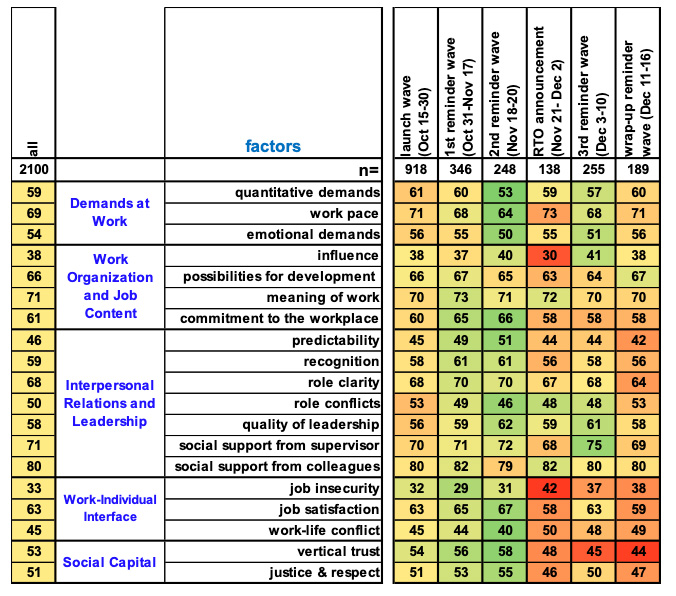
OHCOW analyzed the hazards of Carpal Tunnel Syndrome in repetitive work.
Background
OHCOW was contacted by a representative from the Office of the Worker Advisor (OWA) who was seeking support for a worker who had developed bilateral carpal tunnel syndrome (CTS) over the course of a lengthy career in the fast-food industry. The worker had been denied entitlement to WSIB insurance benefits, and the rep was seeking OHCOW’s objective opinion on whether the worker’s job duties led to the development of their bilateral CTS.
Intervention
OHCOW’s interdisciplinary staff team, including a Physician, Ergonomist, Nurse and Client Service Coordinator, gathered relevant information related to the worker’s condition and work demands, identifying several highly repetitious actions:
- Constant gripping of spoons, utensils , and sauce bottles
- Fine finger movements to grab loose topics (lettuce, cheese, etc.)
- Fine finger movements to wrap food
- Pressing with the palm to use the cheese pump
- Squeezing the lever to use sour cream gun
- Gripping fryer baskets to place them into the deep fryer
- Using the steamer to steam items
With the added physical and mental stress of speed: all orders had to be out in 60 seconds or less and ~ 300 food items would be produced over the course of the day, many at peak hours (lunch and dinner time).
The Ergonomist concluded: The worker’s job exposed her to hazards related to the development of CTS. The risk factors associated with her work duties involved repetitive gripping, frequent hand movements, awkward postures, and working in a high paced environment. Scientific literature referenced in this report suggests that exposure to these factors can contribute to the development of carpal tunnel syndrome. As a result, it is probable that the exposures to these risk factors contributed to the development of CTS.
Impact
The case went to the Workplace Safety and Appeals Tribunal (WSIAT) where it was determined that:
- the worker sustained an accident arising out of and in the course of her employment. The accepted disablement history significantly contributed to the worker’s bilateral carpal tunnel syndrome first diagnosed on April 30, 2015. Therefore, the worker has initial entitlement to bilateral carpal tunnel syndrome.
- The decision was based strongly on evidence provided by the OHCOW Physician and Ergonomist in their reports, utilizing relevant literature and ergonomic tools to quantify the physical and psychosocial demands of the worker’s tasks.
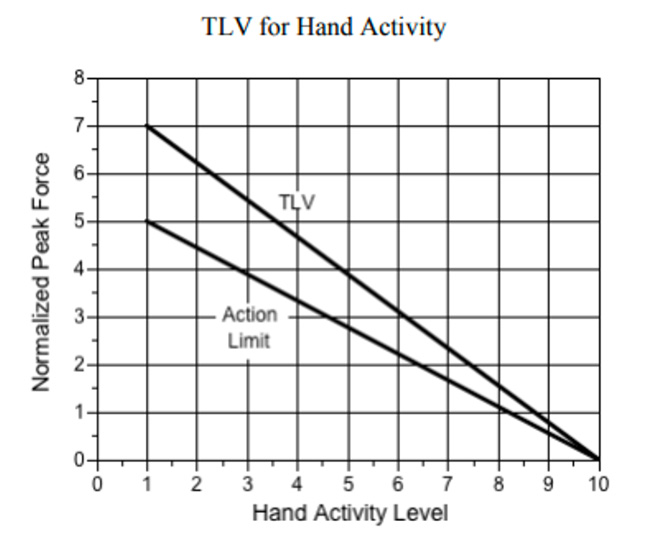
In response to the recent Workplace Safety and Insurance Board (WSIB) policy change regarding gastrointestinal (GI) cancer claims, and asbestos exposure, OHCOW has taken proactive measures to support affected workers and their families.
Background
Recognizing the impact of this policy update, we established a dedicated working group comprising an Occupational Hygienist, an Occupational Health Coordinator, and a Legal Representative to provide expertise and guidance in navigating this updated framework in policy 16-02-11 (October 1, 2024).
Our primary focus is to review previously denied GI cancer claims and assess them within the framework of the updated policy. This involves conducting detailed re-examinations of work and exposure histories to determine if these claims meet the revised asbestos exposure criteria. By leveraging our expertise in occupational hygiene, and legal lens we are ensuring that each case is thoroughly reviewed.
Through this initiative, OHCOW is actively collaborating with workers, families, and advocates to facilitate the reconsideration of denied GI cancer claims. Our efforts are aimed at ensuring that those who have suffered occupational asbestos exposure leading to GI cancers receive the ability to have their claims re-adjudicated by the WSIB.
As we move forward, OHCOW remains committed to advocating for workplace health and safety, supporting workers through complex files, and addressing occupational disease with a science-based, worker-centered approach.
We want to hear from you!
- Did you or your family member have a previously denied WSIB GI cancer claim and may have had asbestos exposure?
- Are you a worker representative and unsure if one of your files falls within the WSIB’s updated GI cancer framework?
- Do you have concerns about the impact of your work on your health?
Contact The Occupational Health Clinics for Ontario Workers (OHCOW)
Explore the rest of the Report:
- INTRODUCTION
- KEY PRIORITIES
- TOOLS AND RESOURCES
- FINANCIALS
